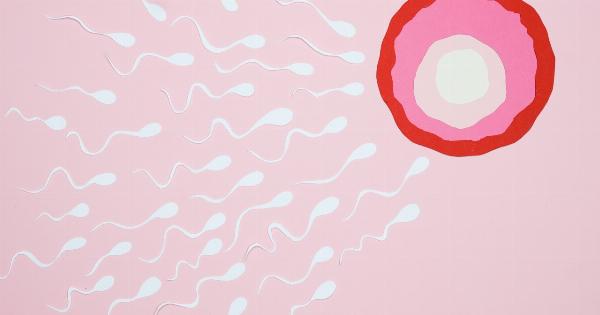When it comes to fertility and conception, there are numerous myths and misconceptions that can confuse and mislead individuals or couples trying to start a family.
Sorting through these myths and understanding the reality is essential to make informed decisions and optimize the chances of successful conception. In this article, we will explore some common fertility myths and separate them from reality.
Myth 1: Getting pregnant is easy and happens quickly for everyone
Contrary to popular belief, getting pregnant is not always easy or fast for everyone. While some couples may conceive within a few months of trying, others may face challenges and require more time or assistance.
Various factors, such as age, underlying health conditions, and lifestyle choices, can influence fertility and the time it takes to conceive.
Myth 2: Women can only get pregnant during ovulation
While ovulation is the most fertile period for women, it does not mean that conception is impossible at other times of the menstrual cycle.
Sperm can survive in the female reproductive tract for several days, increasing the chances of fertilization even if intercourse occurs a few days before ovulation. Understanding the menstrual cycle and tracking ovulation can be helpful when trying to conceive, but it is not the only determining factor.
Myth 3: Infertility is always a woman’s problem
Infertility is not solely a woman’s issue. Both men and women can contribute to fertility problems. Male factors, such as low sperm count, poor sperm motility, or structural abnormalities, can affect a couple’s ability to conceive.
It is important for both partners to undergo fertility evaluations and rule out any underlying issues.
Myth 4: Age doesn’t affect fertility in men
While age is known to have a significant impact on female fertility, it can also affect male fertility. As men age, the quality and quantity of sperm may decrease, making conception more challenging.
Advanced paternal age has been associated with higher risks of certain genetic conditions and an increased time to pregnancy. It is important for both men and women to consider the effect of age when planning to have children.
Myth 5: Stress is the main cause of infertility
It is a common misconception that stress alone is the leading cause of infertility. While stress can certainly impact overall health and well-being, it is unlikely to be the sole cause of infertility.
Infertility is a complex issue with numerous potential causes, including hormonal imbalances, reproductive disorders, structural abnormalities, and genetic factors. Although reducing stress levels can be beneficial for overall health, it may not be the sole solution for fertility issues.
Myth 6: Having sex multiple times a day increases the chances of conception
Contrary to popular belief, having sex multiple times a day does not necessarily increase the chances of conception. In fact, frequent ejaculation can affect the quality of sperm, leading to a decrease in fertility.
It is more important to focus on timing intercourse around the woman’s fertile window, as well as maintaining a healthy lifestyle and optimizing reproductive health.
Myth 7: Certain sexual positions can increase the chances of conception
While certain sexual positions may be more comfortable or enjoyable for couples, there is no scientific evidence to suggest that specific positions enhance the chances of conception.
The most important factor for successful conception is sperm reaching the cervix and fertilizing the egg. The choice of sexual position does not significantly impact this process.
Myth 8: Using contraception for a long time may lead to infertility
Using contraception, such as birth control pills, for an extended period does not generally lead to infertility. Fertility typically returns to normal shortly after discontinuing most forms of contraception.
However, it is worth noting that for some individuals, especially those with underlying fertility issues, it may take time for hormonal balance and regular ovulation to resume.
Myth 9: Fertility treatments always result in multiple pregnancies
While fertility treatments, such as in vitro fertilization (IVF), can increase the chances of multiple pregnancies, it does not mean that every fertility treatment will result in multiples.
Advances in reproductive medicine have allowed for greater control and minimize the risks associated with multiple pregnancies. Many fertility clinics now have protocols and strategies in place to reduce the chances of multiple gestations while maximizing the chances of successful conception.
Myth 10: Adoption or fostering is the only option for couples struggling with fertility
For couples struggling with infertility, adoption or fostering is not the only option.
Various fertility treatments and assisted reproductive technologies, such as IVF, intrauterine insemination (IUI), and sperm or egg donation, can help individuals or couples fulfill their desire to have children biologically. It is essential to consult with a reproductive specialist to explore the available options and choose the most suitable path.




























